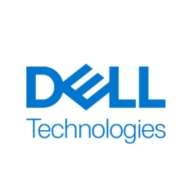

Dell CloudIQ and Elastic Observability are products in IT infrastructure and application monitoring. Elastic Observability has the upper hand due to its advanced features and integration capabilities.
Features: Dell CloudIQ offers robust analytics for predictive insights, strong customer support, and comprehensive pricing. It empowers IT operations with actionable data. Elastic Observability provides unified visibility across data sources, is scalable, and integrates with various platforms, making it suitable for environments requiring extensive integration.
Room for Improvement: Dell CloudIQ could enhance its integration capabilities, offer more sophisticated predictive analytics features, and improve user interface customization. Elastic Observability might improve initial deployment processes, simplify its complex configuration requirements, and streamline its user interface for easier navigation.
Ease of Deployment and Customer Service: Dell CloudIQ is recognized for its straightforward deployment, which minimizes setup complexity and enhances customer service. Elastic Observability, while more complex in initial setup, compensates with extensive documentation and robust support resources that support a self-service deployment model.
Pricing and ROI: Dell CloudIQ offers competitive pricing that focuses on value with its predictive analysis capabilities, contributing to efficient resource management and better long-term ROI. Elastic Observability, although sometimes seen as higher in cost, offers significant ROI through its rich feature set and optimization across complex infrastructures, making it a compelling choice for extensive observability needs.
| Product | Market Share (%) |
|---|---|
| Elastic Observability | 2.6% |
| Dell CloudIQ | 0.9% |
| Other | 96.5% |


| Company Size | Count |
|---|---|
| Small Business | 2 |
| Large Enterprise | 8 |
| Company Size | Count |
|---|---|
| Small Business | 9 |
| Midsize Enterprise | 4 |
| Large Enterprise | 16 |
CloudIQ is a no cost Software-as-a-Service (SaaS) offering that provides a simple monitoring interface for an unlimited number of Unity systems. CloudIQ accesses data in near real time to enable monitoring and troubleshooting for Unity systems.
Elastic Observability offers a comprehensive suite for log analytics, application performance monitoring, and machine learning. It integrates seamlessly with platforms like Teams and Slack, enhancing data visualization and scalability for real-time insights.
Elastic Observability is designed to support production environments with features like logging, data collection, and infrastructure tracking. Centralized logging and powerful search functionalities make incident response and performance tracking efficient. Elastic APM and Kibana facilitate detailed data visualization, promoting rapid troubleshooting and effective system performance analysis. Integrated services and extensive connectivity options enhance its role in business and technical decision-making by providing actionable data insights.
What are the most important features of Elastic Observability?Elastic Observability is employed across industries for critical operations, such as in finance for transaction monitoring, in healthcare for secure data management, and in technology for optimizing application performance. Its data-driven approach aids efficient event tracing, supporting diverse industry requirements.
We monitor all IT Infrastructure Monitoring reviews to prevent fraudulent reviews and keep review quality high. We do not post reviews by company employees or direct competitors. We validate each review for authenticity via cross-reference with LinkedIn, and personal follow-up with the reviewer when necessary.